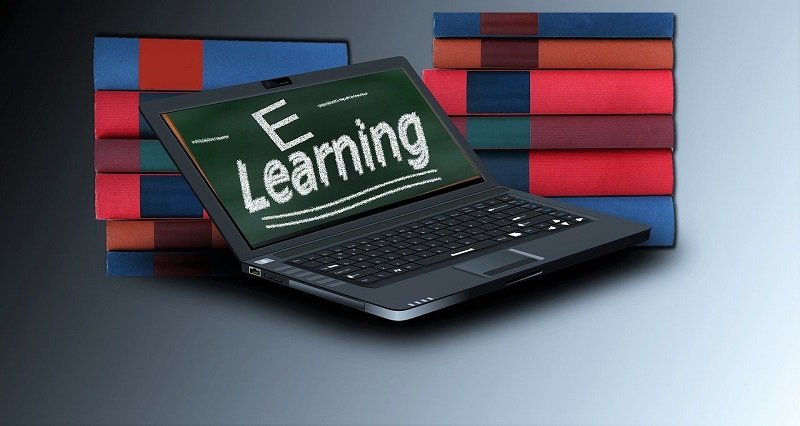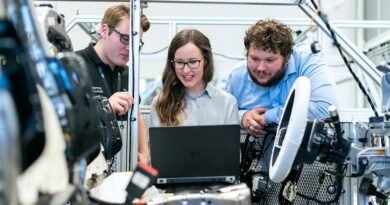Digital and Traditional Learning: Harmonizing Methods for Modern Education
The landscape of education has undergone a remarkable transformation, largely driven by the advent of digital learning solutions and the challenges posed by the Covid-19 pandemic. This transformation marks the beginning of a significant shift in the educational ecosystem, necessitating a deeper exploration of how digital learning is reshaping the way we teach and learn.
The Rise of Digital Learning: A Response to Changing Times
The rapid embrace of digital learning solutions and school management systems has not only made teaching more efficient but has also enabled students to learn more effectively. This shift, accelerated by the recent pandemic, highlights the urgency and adaptability of the education industry in responding to unforeseen challenges.
1. Maximizing Technology and Resources for Enhanced Learning
In an era where students are constantly surrounded by technology, traditional learning methods alone may no longer suffice. Digital learning harnesses the power of smart education resources, making learning accessible, enjoyable, and tailored to the needs of a digitally native generation. This integration of technology into education is not just about convenience; it’s about transforming learning into a more engaging and effective experience.
2. Personalized Learning Experiences through Digital Platforms
Digital learning tools provide a personalized approach to education. By leveraging technology, educators can create customized learning experiences that cater to individual student needs. This personalization is crucial in uncovering and nurturing hidden talents and maximizing student potential. Digital platforms offer a diverse range of learning materials and resources, enabling teachers to design lessons that resonate more profoundly with their students.
3. Scalability and User-Friendliness of Digital Solutions
The demand for scalable and user-friendly digital learning solutions has surged in the wake of the pandemic. These solutions are designed to be accessible to individuals with varying levels of computer literacy, ensuring that learning is not confined by technological barriers. The flexibility of these platforms allows education to be more inclusive, catering to a broader spectrum of learners.
4. Automation and AI in Enhancing Learning Experiences
Automation and artificial intelligence (AI) in digital learning solutions have revolutionized the education sector. These technologies streamline learning processes, making education more efficient and accessible. AI-driven platforms offer a wealth of e-learning resources, enabling students to take control of their learning journey and achieve their academic goals more effectively.
5. Analyzing Learning Patterns for Measurable Improvement
Cloud-based learning management systems provide valuable insights into student learning patterns and performance. Big data analytics enables educators to track and analyze student progress, offering a more detailed understanding of their academic journey. This data-driven approach to education allows for more targeted and effective teaching strategies, benefiting both students and teachers.
The Synergy of Digital and Traditional Learning Methods
While digital learning has become increasingly prevalent, it is essential to find a balance between new-age digital tools and traditional teaching methods. The goal is not to replace traditional education but to enhance it through the integration of technology.
Combining Digital and Traditional Approaches for Holistic Education
The integration of digital learning with traditional methods creates a more dynamic and comprehensive educational experience. While digital tools provide flexibility and access to a wealth of resources, traditional classroom interactions and teachings remain vital in fostering a well-rounded learning environment.
Choosing the Right Digital Learning Solutions
Selecting appropriate digital learning tools is crucial in adapting to the evolving educational landscape. School management software and e-learning platforms should be chosen based on their ability to meet long-term educational needs, ensuring that they complement rather than replace traditional teaching methods.
Navigating the Post-Pandemic Education Landscape
The pandemic has been a catalyst for change in the education sector, highlighting the need for adaptable and resilient learning systems. Technologies like cloud computing and big data are becoming increasingly relevant, offering new ways to enhance the learning experience.
Conclusion: The Future of Education in a Digital Age
The integration of digital learning into traditional education is not just a response to the challenges posed by the pandemic; it is a forward-looking approach to empower the next generation of learners. As we navigate this new era of education, the focus should be on maximizing the potential of digital tools while preserving the essence of traditional teaching methods. The future of education lies in the synergy of these two approaches, creating a more inclusive, effective, and adaptable learning environment for students and teachers alike.




